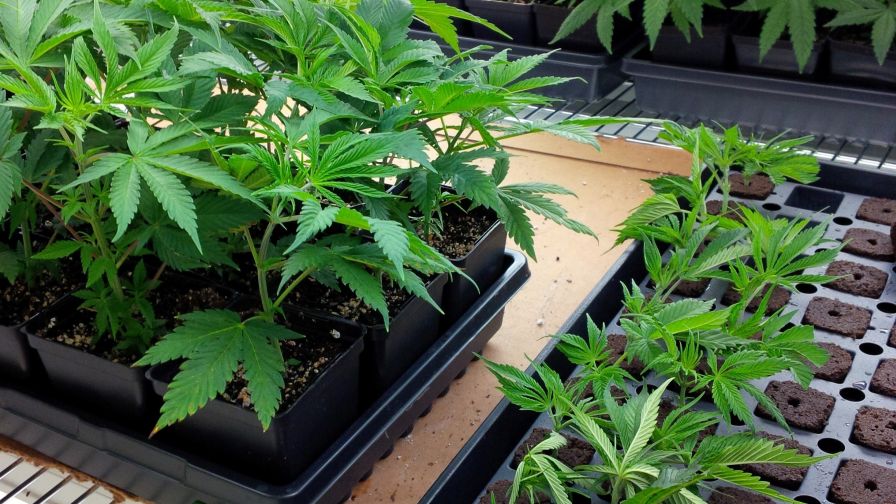7 Tips for Cannabis Cloning Success

Photo: Ryan Douglas
The timely rooting of cuttings — or clones — can make or break a cannabis grower’s production schedule. Coming up short can result in planting delays, half-empty grow rooms, and last-minute scrambles to replace cuttings that didn’t root.
Quick-rooting cuttings help give growers peace of mind, knowing their production plan is on schedule and the crop is off to a healthy start.
Whether you’re propagating for the spring planting season or taking weekly cuttings for an indoor grow operation, remember these seven tips to help ensure a perfect cannabis propagation program.
Respect Your Mothers
Weak or infected stock plants will create the same undesirable traits in cuttings — if they manage to root at all. Stock plants, or “moms” in canna-speak, must be kept meticulously clean and replaced several times a year to ensure the production of healthy, vigorous cuttings. Switch out stock plants every four months with new moms, and be sure to keep them well-fed. Be vigilant about preventative pest control, and if you use beneficial insects, initiate applications while the stock plants are still young.
Get Hip to Hydration
Successful rooting is all about water balance — in the air, in the substrate, and in the plant.
Ensure your stock plants are turgid by irrigating at least 24 hours before cutting day. Once the cuttings are removed from the stock plant, immediately place them into a cup of water. Before sticking, ensure the rooting substrate has been sufficiently irrigated. Be mindful of excess airflow or intense light during the sticking process, which can quickly dry out fresh cuttings.
Pinching Prevents Pruning
Pinching and pruning stock plants are vital to the timely production of rooted cuttings. Pinching removes up to an inch of new growth at the tip of a branch to direct the plant’s energy into generating more shoots. Pruning is a harder cut that removes entire branches to reshape or control the form of a plant.
If you propagate infrequently, pinch your plants every two weeks as if you were taking cuttings anyway. A bi-weekly pinch schedule will encourage a constant flush of young cuttings and prevent undesirable growth that may need to be pruned later.
Take a Dip
In conventional horticulture, cuttings are sometimes dipped in a liquid solution before sticking. This can happen for a variety of reasons, but usually, it’s done to apply a pest control product or coat the plant material in an anti-desiccant.
Many of these products aren’t allowed on cannabis, but the practice of dipping cuttings before they’re stuck is just as valid. Consider giving your cuttings a short bath in a biostimulant or organic fungicide prior to sticking. Make sure to test for phytotoxicity before sticking the entire crop. Dipping also offers the additional benefit of hydrating cuttings before they’re stuck.
Handle Humidity
The goal with rooting cuttings is to decrease relative humidity (RH) slowly from 100% on sticking day to 65% to 75% RH about seven to ten days later. The secret to fast rooting is maintaining ideal humidity levels in the air while keeping the cutting as dry as possible. This helps to prevent mold or bacterial growth and helps force the cutting to push out roots as quickly as possible.
This could mean utilizing full shade, no ventilation, and turning off horizontal or vertical airflow fans in greenhouses. If water is applied through a boom or mist system, the smaller the droplet size, the better.
Indoors, use humidifiers if all the cuttings in the propagation room are at the same stage. Humidity domes work well if you’re caring for cuttings at various stages of maturity in the same room. When cuttings begin to wilt, increase humidity by spraying the inside walls of the domes, not the plants.
Feed Their Needs
Remove domes or stop misting as soon as cuttings begin to root. This will help prevent leaf fungus and force the new roots to grow out in search of water.
As soon as you see the cuttings begin to callus, initiate feeding. You want the first roots that exit the plant to be met with nutrition. Some growers believe that applying fertilizer to the substrate before sticking can have a dehydrating effect on the cuttings, while others pre-soak their substrate with a pH-balanced, low-strength nutrient solution.
Either way, most rooting substrates need to be irrigated about one week after sticking. Do this with a pH-adjusted nutrient solution of at least 1.0 EC. Use your flowering formula since research has shown that adequate phosphorus is crucial to forming new plant roots.
Break Out the Beneficials
Most beneficial insects won’t be effective at 100% RH, so begin your IPM program as soon as the plants are taken off the mist or once the domes are completely removed. Newly rooted cuttings are too young for pest-control spray applications, but they’re not too young to get attacked by damaging insects. Start your predatory insect program early! Sachets are too big for this stage, so buy beneficials that can be manually sprinkled onto plant trays.
Cannabis cuttings that root on time are the cornerstone of a productive crop. A healthy plant is an efficient plant, and it all starts with propagation. Whether you’re growing outdoors, indoors, or somewhere in between, follow the above tips to ensure that your plants will be rooting for your success.









